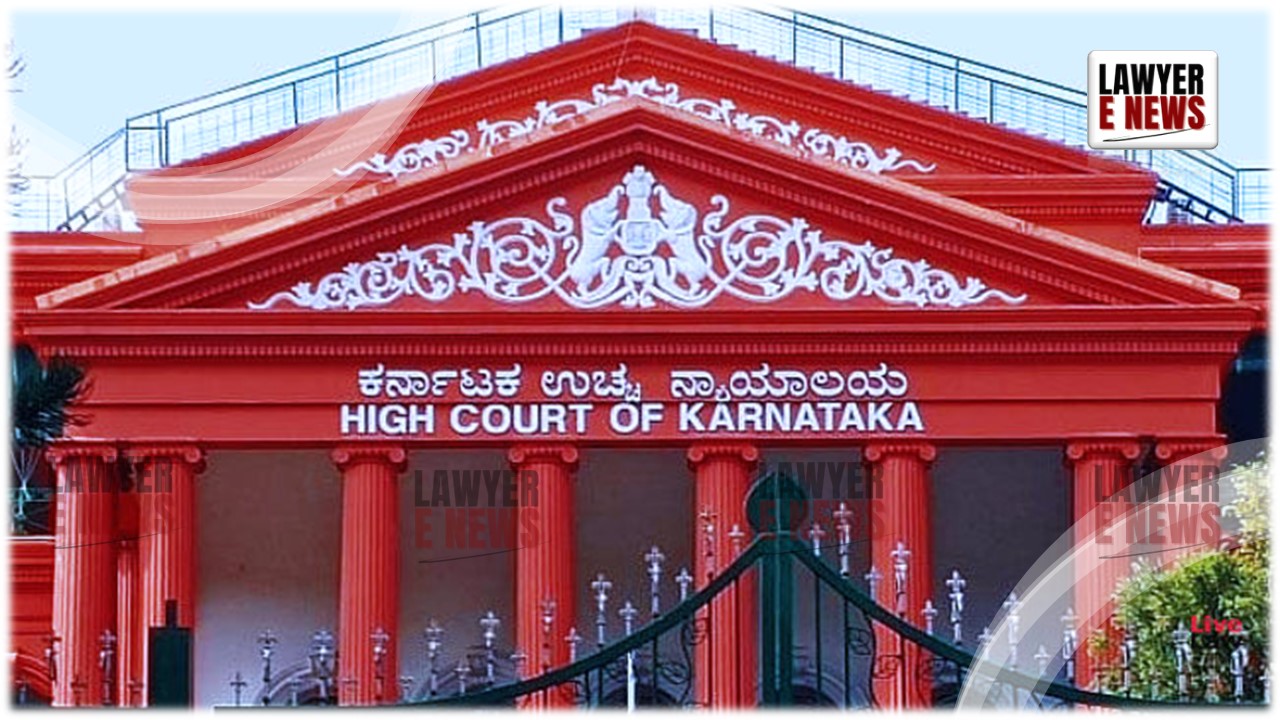-
by Admin
17 December 2025 4:09 PM



In a significant judgment Karnataka High Court upheld the Debt Recovery Tribunal's (DRT) decision to exclude the properties of co-sureties from recovery proceedings. Justice Hemant Chandangoudar ruled that the release of these properties by Andhra Bank (now Union Bank of India) during a 2007 loan restructuring effectively terminated the guarantee obligations of the co-sureties. The petition by M/s. SSA Constructions and its managing partner seeking inclusion of the released properties was dismissed, reinforcing principles of fairness and the sanctity of discharged guarantees.
DRT's Recall of Inclusion Order Was Justified: High Court
The petitioners challenged the DRT’s decision to recall its earlier order that allowed the inclusion of co-sureties’ properties. They argued that the recall application was time-barred and beyond the tribunal's jurisdiction. However, the High Court held that tribunals like the DRT possess the authority to correct errors apparent on the face of the record, provided such corrections do not crystallize substantive rights.
Justice Chandangoudar cited Rule 5A of the Debt Recovery Tribunal (Procedure) Rules, 1993, which permits tribunals to review and rectify orders. “It is well-settled that a tribunal has the ancillary power to recall its own orders to rectify procedural errors or mistakes causing prejudice,” the court noted. Although the recall application was filed four months after the limitation period, the court condoned the delay, observing, “Delay may be condoned on the ground of sufficient cause, particularly when the tribunal seeks to correct an error that caused prejudice.”
The court emphasized that the DRT’s recall of the inclusion order was aimed at rectifying an inadvertent mistake and was procedurally fair. “The recall did not infringe upon any substantive rights of the petitioners as no recovery certificates had been issued at the time,” the court stated.
Return of Title Deeds Ended Co-Sureties’ Obligations
The case revolved around properties that had been mortgaged by co-sureties—Respondent Nos. 2 and 3—as security for loans obtained by M/s. SSA Constructions. In 2007, during a loan restructuring, the bank reduced the loan limits and released these properties, returning the title deeds to the respective owners.
The petitioners contended that the exclusion of these properties was collusive and sought their inclusion in recovery proceedings initiated in 2011. However, the court held that the release of the properties terminated the guarantee obligations of the co-sureties. Citing Section 138 of the Indian Contract Act, the court observed: “The release of one co-surety does not discharge the others, nor does it affect the liability of the principal debtor. However, the release of a co-surety’s property extinguishes the creditor’s claims against that surety for the obligations covered by the released security.”
The court further clarified that under Section 141 of the Act, a surety is discharged to the extent of any security lost or relinquished by the creditor. “The return of title deeds to the co-sureties unequivocally brought the contract of guarantee to a close,” the court held.
Petitioners Barred by Estoppel and Acquiescence
The court also ruled that the petitioners’ prolonged inaction barred them from challenging the release of the co-sureties’ properties. “The petitioners remained silent for over six years after the properties were released in 2007. Their acquiescence precludes them from reopening the matter,” the court stated.
Applying the principle of estoppel, the court remarked, “A party that knowingly allows a situation to persist without objection cannot later challenge it, particularly when substantive rights have been altered.”
The court also noted that the petitioners themselves had benefited from the release of their own properties during the restructuring, further undermining their case. “The petitioners cannot seek inclusion of properties belonging to others while enjoying the release of their own assets,” the judgment stated.
Release of Properties Constituted Material Alteration
Justice Chandangoudar also addressed the broader implications of the release of properties on the contract of guarantee. The court ruled that the release of certain properties without the consent of the co-sureties constituted a material alteration of the principal contract between the creditor and the principal debtor.
Quoting the judgment in Croydon Gas v. Dickinson (1876), the court observed, “Any dealing by the creditor that prejudices the position of a surety discharges the latter.” The court concluded that even if the guarantee obligations had not been extinguished, the release of properties would have granted the co-sureties the right to avoid their obligations.
A Contract of Guarantee Cannot Be Revived
In summation, the court held that the contract of guarantee had been effectively terminated in 2007, and the petitioners could not seek its revival. “The principles of fairness, estoppel, and the sanctity of discharged guarantees preclude the petitioners from including the co-sureties’ properties in recovery proceedings,” the judgment stated.
The court dismissed the writ petition and upheld the DRT’s decision, bringing clarity to the legal principles governing contracts of guarantee and the rights and liabilities of sureties in debt recovery cases.
This judgment underscores the importance of procedural fairness and the finality of released guarantees in debt recovery proceedings. It reaffirms that creditors must act within the bounds of their contracts and that parties must promptly assert their rights to avoid estoppel.
Date of Decision: December 12, 2024
